Last Updated on May 24, 2021
Power steering was created in 1951 to help drivers turn their vehicles with ease. During a time when cars started getting bigger and heavier, this was a welcome advancement in technology. It takes more energy to move something with more mass, especially at low speeds.
Classic power steering uses a power steering pump that moves pressurized hydraulic fluid to provide assist, while some modern designs use an electric motor instead.
Hydraulic power steering is often said to provide better steering feel, but with recent advancements in electric power steering this is not always the case. Electric power steering systems often require no maintenance and provide marginally better fuel economy, as they lack a power steering pump and are not driven from the accessory belt.
Keep reading to understand how a hydraulic power steering pump works, what the symptoms of a bad power steering pump are, and how much it costs to replace the pump if it fails.
How a Power Steering Pump Works
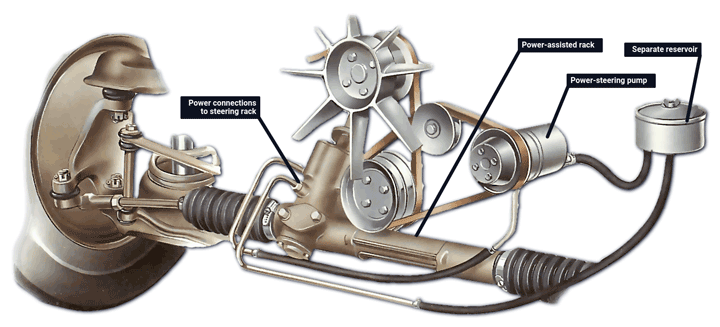
Power steering fluid is pressurized by a power steering pump and sent from the reservoir through the output of the pump to the steering gear. The pump is powered when the vehicle is running via a pulley attached to the vehicle’s accessory belt.
The fluid applies pressure to the steering gear which turns the wheels. This pressure increases as the engine speed increases. Since there must be sufficient pressure to turn the wheels while at idle, the pressure at high engine speeds is often more than necessary. This excess pressure is dissipated with a pressure-relief valve.
The car is not supposed to apply steering assist to the wheels when the steering wheel is not being turned, so a sensor called the rotary valve determines when the wheel is being turned by means of a torsion bar that twists as torque is applied.
One end of the torsion bar is connected to the steering wheel and the other end is connected to the steering gear. This ensures the amount of torque applied at the steering wheel is equal to the amount applied to the wheels. This is how the driver controls how much the front wheels are turned.
It is unsafe to drive without a functional power steering pump since it affects how driver inputs move the car.
Steering effort is significantly higher on vehicles with a broken power steering pump, to the point where certain people in certain vehicles may not even be able to turn the wheel at all! In general, the heavier the vehicle, the harder the wheel will be to turn without the assist.
Note: Steering a vehicle with malfunctioning power steering will likely be more difficult than steering the same vehicle in a trim that was not equipped with power steering in the first place. This is due to the resistance of the power steering components, which create drag on the system that a driver must overcome. Additionally, manual (non-powered) steering ratios are often slower, which means the driver has more leverage over the front wheels.
Related: Electric vs Hydraulic Power Steering
Bad Power Steering Pump Symptoms
All parts on a car have a limited lifespan and the power steering pump is no exception. Keep an eye (and ear) out for these abnormal behaviors which could signal a problem with the steering pump and have it inspected by a mechanic if you notice any of them to prevent irreversible damage to your pump.
#1 – Low and/or Leaking Power Steering Fluid Level
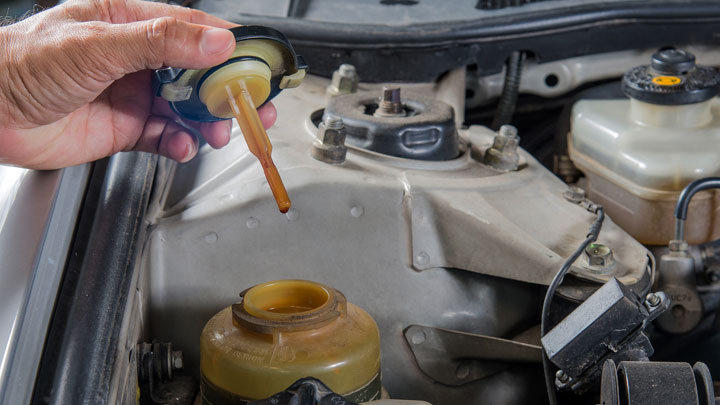
Power steering fluid is a crucial component of the pump, so running the pump low on power steering fluid can cause problems. The pump can also be physically damaged due to wear or age.
The reservoir for the power steering fluid is found under the hood and is often on the passenger’s side of the vehicle, though it depends on how the engine is mounted. Check the level of fluid to ensure it’s within the proper range. There should be a low and a full mark on the reservoir.
If you see any leaks between the pump and the reservoir, the affected part should be repaired before the vehicle is driven much more to limit damage. The power steering fluid is usually red or red-brown, so seeing a puddle of this color below the vehicle is a pretty big clue that something may be wrong with the power steering pump.
See Also: Transmission Fluid Color Chart
#2 – Gray Power Steering Fluid and/or Visible Metal Flakes

While checking the level in the reservoir, note the color of the power steering fluid. If it’s gray, this indicates that it has oxidized and won’t function as it should. Oxidation can happen when an excess of air enters the system as it could through a faulty power steering pump.
A bad pump can sometimes cause metal flakes (gray or chrome) in the power steering fluid. Metal rubbing on metal and simply material wearing away due to deterioration can each be the culprit.
Related: Metal Shavings in Oil (What it Means)
#3 – Squealing Upon Startup
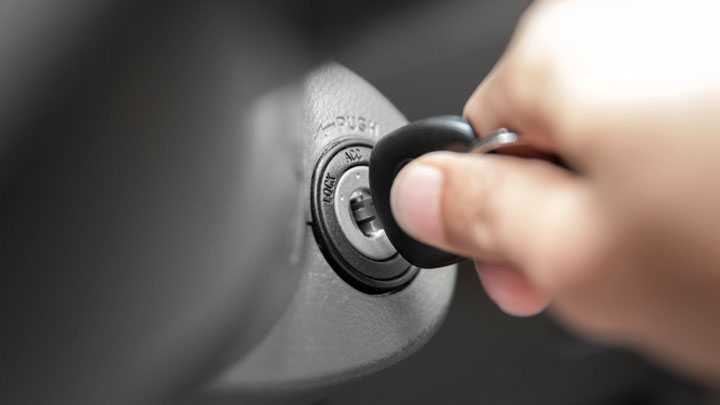
This is a common symptom when the accessory belt is loose, but it could also be an indication that the power steering pump is going bad. Before replacing the pump, first check to make sure the tension on the accessory belt is set correctly.
If you hear the squeal during sharp turns and not just on startup, this may point toward a bad pump, not just a loose belt.
#4 – Whining or Groaning Sound While Turning

Other unusual noises can be caused by a faulty power steering pump. Groaning is worse than whining because it usually signals a lack of sufficient fluid, which can ruin other parts in the power steering system. Either sound can also be caused by a bearing that has been knocked out of place.
This whining or groaning often intensifies as the engine speed (RPM) increases and as the steering wheel turns. If you hear abnormal sounds when you turn your steering wheel, try going to a safe place such as a lightly-traveled road and drive in a manner of different ways (like accelerating, decelerating, starting, and turning various degrees) to find the condition(s) that causes problems.
This is great information to give the mechanic so they have an easier time identifying the problem.
Note: Some power steering pumps will groan when held at full lock for more than a couple seconds. This is somewhat normal, but doing this for more than a moment is pretty hard on the power steering pump and should be avoided when possible.
#5 – Steering Wheel Slow to Respond

Turning the steering wheel should immediately turn the front tires, as expected. If you turn the steering wheel and the vehicle’s tires have to play “catch-up”, something could be wrong with the power steering pump.
This can be dangerous because when the vehicle doesn’t react to the driver’s input as expected, reaction time is increased as the driver may have to correct their initial input. This can even cause a collision if the driver tries to swerve to avoid something or someone but the vehicle doesn’t respond as it should.
This condition could indicate other problems with the steering components or front suspension components as well, and should be addressed as soon as possible.
#6 – Increased Steering Effort

A vehicle with power steering should be fairly easy to turn. If your vehicle’s steering seems unusually heavy and is hard to turn, it’s a good idea to have the power steering pump checked out.
Power Steering Pump Replacement Cost
Best places to order parts? See: 19 Best Online Auto Parts Stores
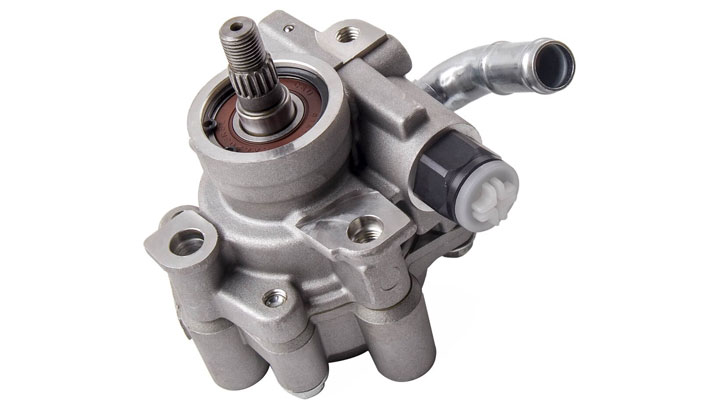
Having the power steering pump replaced by a professional has a wide variance in cost depending on where it’s done and on the vehicle being repaired. The average cost is between $350 and $700.
Parts are often more expensive than labor in this case, as the pump is usually relatively easy to access in the engine bay. Labor ranges from $150 to $250 and the pump with associated parts ranges from $200 to $450.
As always, shop around to find an auto mechanic you can trust for the best price. It’s a good idea to develop a solid working relationship with an automotive shop once you’ve found a good one in order to get the best service and possibly even some good deals.
Experienced mechanics may be able to change their own power steering pump at home with some basic hand tools and a special tool to remove the pulley from the pulley shaft that can often be rented from the auto parts store.

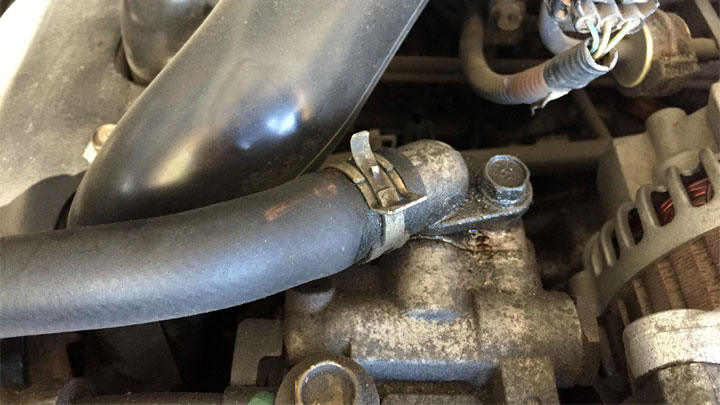


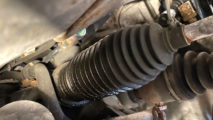
Steering is very difficult out of the driveway and very screechy even when fluid is topped up. After 150 ft. of driving everything settles down, and steering normally. I do have fluid leaks that I am watching. I had pump, resivoir, and hoses replaced 28k miles ago. Would a bad rack and pinion act this way?.